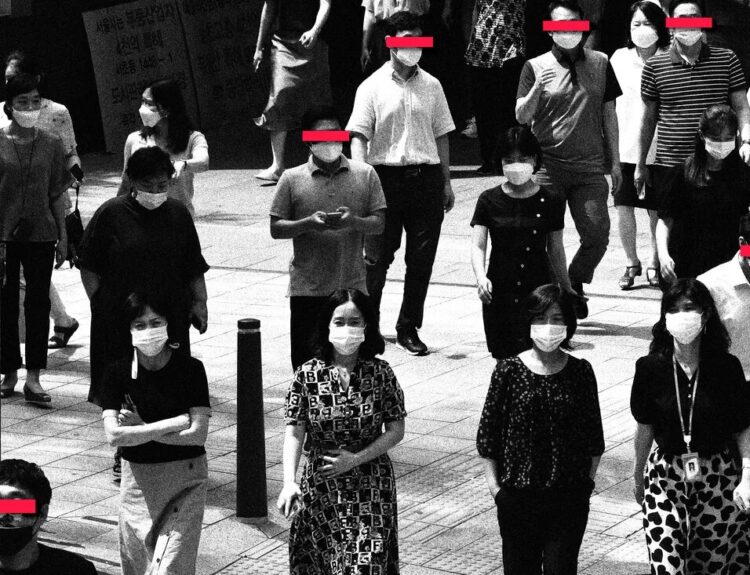Type ‘Korean hip hop’ into Google Search and out comes 3,110,000 results—a subreddit dedicated to the genre, Youtube, 8tracks, and Spotify playlists, blog posts, and news articles. Of course, there are also curious music enthusiasts looking to get into the genre and broaden their listening repertoire.
Korean hip hop has gained popularity at home and abroad in recent years, an upcoming trend in the so-called “Korean Wave” (Hallyu) often represented by K-pop. But what exactly does the ‘K’ in K-hip hop represent? Current hip hop trends in South Korea no doubt reflect heavy Western influences, but claiming K-hip hop as a whole is a carbon copy of US hip hop unfairly renders invisible its unique Korean elements. It also nullifies the agency of native Korean actors in shaping the local music scene and actively contributing to hip hop as a worldwide phenomenon. Yet, despite its recent growth and success, where K-hip hop still fails is in its conspicuous, seemingly deliberate appropriation of black culture.
In order to contextualize the clash of cultural expressions and problematic practices of K-hip hop, it is necessary to delve into the historical origins of hip hop and its development within Korea. According to the Encyclopedia of New York State, hip hop was created by ethnic groups of African descent in the Bronx during the 1970s, defined by “a strong beat, intricate mixing of recorded music, DJing, and rhythmic song-speech known as MCing or ‘rapping.’” DJ Kool Herc, Sugar Hill Gang, Afrika Bambaataa, and Grandmaster Flash were pioneers of the scene and produced songs that are now widely recognized as hip hop classics. Breakdancing and graffiti are also considered mainstays of hip hop culture.
The style then morphed and mixed with other genres, traveling from inner-city to suburbs, from New York to Los Angeles, finally appealing to white suburban markets as hip hop became commercially packaged and mainstream. Hip hop has since divided into an underground scene and its more mainstream relative, the former often seeing themselves as the gatekeepers and pioneers of authenticity, a battle between ‘real’ hip hop versus its ‘sellouts.’
It was not until about twenty years after its inception that hip hop had its beginnings in Korea. Hyun Jin-young is credited as Korea’s first hip hop artist. However, it was the success of K-pop idol group Seo Taiji and Boys’ song “I Know” that introduced hip hop-esque sounds to the Korean public. Later, Drunken Tiger was able to achieve mainstream popularity without crossing into the pop genre, embracing a “pure” hip hop style.
Direct access to American hip hop, as well as the rising visibility of K-hip hop, is largely attributable to the Internet. Today, rap and hip hop have influenced Korean music, and groups like the Dynamic Duo and Epik High, have garnered international acclaim. Televised rap competition programs like “Show Me the Money,” and record labels like Brand New Music, AOMG, Hi-Lite Records, and Illionaire Records, have fostered the proliferation of transnational hip hop talent and culture in Korea.
The transformation of hip hop in Korea has always involved the merging of cultures and contestations between “Americanness” and “Koreanness.” The well-known blog Ask a Korean! suggests that the early decades of K-hip hop emphasized “realness” as belonging to and coming from the US. To be authentically hip hop was thus to imitate American hip hop. Back then, and even now, the K-hip hop world is flush with Korean-Americans and native Koreans who have spent ample time living in the US. Using snippets of the English language, particularly its curse words, dissing, and performing explicit, in-your-face machismo are essential K-hip hop practices adopted from US hip hop culture.
So what is it about Korean hip hop that makes it “Korean”? The obvious answer may be the Korean language, but the adaptation of hip hop by and for Koreans did pose a linguistic challenge until new rap-rhyming methods were devised by Verbal Jint in 2001. In a Korea Times interview, Verbal Jint characterized previous artists’ attempts at rap as being simply, “satisfied with talking fast.” Following Verbal Jint’s lead, rapping became an exploration into an expanded space for lyrical expressionism. Conscious innovations by Koreans thereby aided the adoption of an originally American music style to fit the local, sociocultural context. By embracing this revolutionized use of the Korean language to rap, and by addressing social ills, youth culture, and personal insights tied to Korean life and identity, K-hip hop artists have come into their own, creating a culturally unique subgenre.
One unfortunate side-effect of borrowing from US hip hop is the appropriation of what is perceived to be black American culture, as is evident in K-hip hop music videos. Despite the racial diversity that shaped hip hop history, Korean hip hop often looks single-mindedly toward black culture as source material for performing hip hop. The use of the word “side-effect” here does not suggest that such appropriation is guiltless. In fact, the argument for Korean racial naïveté is a cop out. Feigning ignorance of racial stereotypes (i.e. because of a lack of “contact” with dark-skinned foreigners—which is not historically accurate) is a mechanism for avoiding critical examinations of racism in Korea. It is understandable how, in its gestation phase, K-hip hop came to appropriate elements of US black culture given the aforementioned imitation of “real” American hip hop. What is inexcusable is the continued, intentional appropriation of black culture to this day.
In recent years, Korea has gained notoriety for the public, televised use of blackface by K-pop and K-hip hop idols, as well as employment bias against dark-skinned foreigners. Within Korean hip hop culture, there are similar instances of otherization and racism as artists become wrapped up in the contradiction of performing genuine Koreanness amidst blatant utilization of black racial stereotypes. Examples include nonchalantly throwing the N-word around, sporting cornrows, “talking black,” and acting “thug” by drawing from what is envisioned as African-American gang culture. This is rarely done out of respect or as homage, but rather as a rude co-optation of clothing, hair styles, and speech patterns stripped of their historical and cultural significance. It is done as a means to sell records—a commoditization of another’s culture.
In 2015, Keith Ape’s “It G Ma” hip hop/trap collaboration blew up on the scene, becoming a top pick by Billboard K-Town. American artist OG Maco realized “It G Ma” shared similarities with his track “U Guessed It,” and worse, that its low budget music video was bombarded with stereotypical black imagery. OG Maco called this out on Twitter saying, “I didn’t have grills or extra jackets and lean cups (Styrofoam cups filled with “lean” or “purple drank,” i.e. cough syrup mixed with Sprite) and shit in the ‘U Guessed It’ video, so why did they? Black stereotypes. Lame as fuck.” The obsession with appropriating predominantly black culture in hip hop is still prevalent, and must continue to be challenged as K-hip hop continues to carve a place for itself into the global hip hop world.
The K-hip hop journey has progressed from simply imitating US hip hop and Americanness to finding authenticity in Koreanness. Regrettably, Korean hip hop still participates in racial stereotyping and appropriation of black culture, which may stymie profound international success and recognition from hip hop communities abroad. The issue needs to be addressed not only within the K-hip hop subgenre, but also in Korea more generally. In the end, the quest for authenticity in Korean hip hop is ongoing; the ‘K’ in K-hip hop is thriving, but needs to rid itself of its unseemly elements.
By Angela Lee Sherman
- NOVAsia Is Hiring: Call For Applications and Contributors for Spring 2025! - February 26, 2025
- NOVAsia Is Hiring: Call For Applications and Contributors for Fall 2024! - August 20, 2024
- NOVAsia Is Hiring: Call For Applications and Contributors! - February 19, 2024






